With a Track Record of Success, Bike Share Programs Should Bounce Back Soon
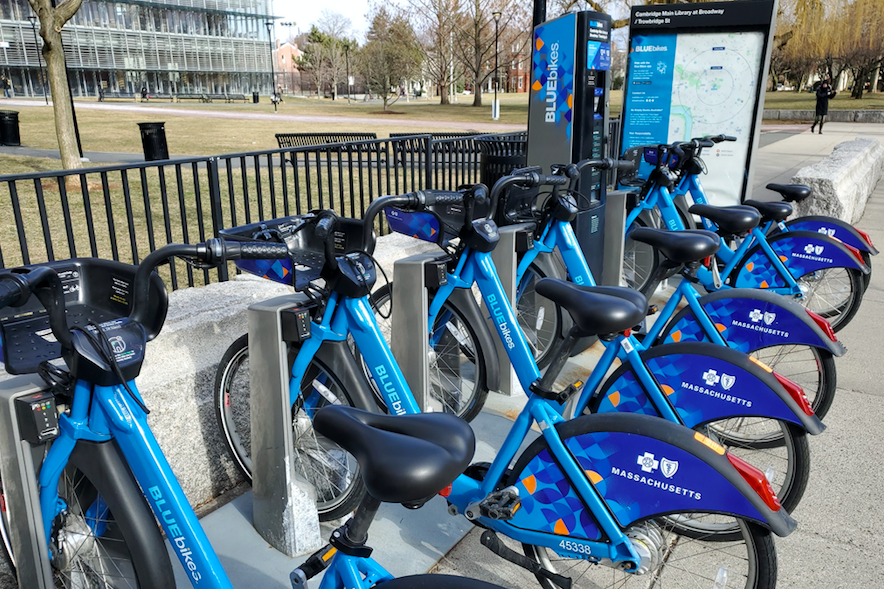

They succeeded in some cities and stumbled in others, but overall, bike share programs in the U.S. have been a success, according to research coming out of the University of Washington.
Commitment to bike share programs matter
Dafeng Xu, an assistant professor at UW who specializes in data science and whose research includes urban and regional policy, crunched data from cities with bike share programs, such as Washington, D.C. and Portland, Oregon. While the overall percentage of bicycle commuters across the U.S. is very low — 0.6 percent, according to Xu’s analysis — commuting by bicycle increased 20 percent between 2008 and 2016, whether or not cities had established bike share programs. But in cities that had committed to bicycle sharing programs as part of the local public transportation infrastructure, the rate of bicycle commuting enjoyed higher rates of growth.
As a rule of thumb, the larger the bike share program, the greater the increase in bicycle commuting. Xu pointed out one notable failure, Seattle’s Pronto system, which among its many struggles before it shuttered in 2017 included the failure of the city to expand the program outside the city’s core.
Despite this crisis, interest in bicycling hasn’t gone away
While the ongoing COVID-19 crisis — and now, the nationwide protests — has largely curbed the use of these bike share programs, Xu suggested they could grow even more if three big changes would occur from city to city: more bicycle lanes, expansion to outlying communities and lengthening the maximum rental time. Bike share programs such as Capital Bikeshare in Washington, D.C., for example, often cap trip lengths at 30 minutes before additional fees kick in.
Across the U.S., various bike share programs were poised for expansion, from the Boston region’s BlueBikes (shown above in Cambridge, Massachusetts) to Divvy in Chicago.
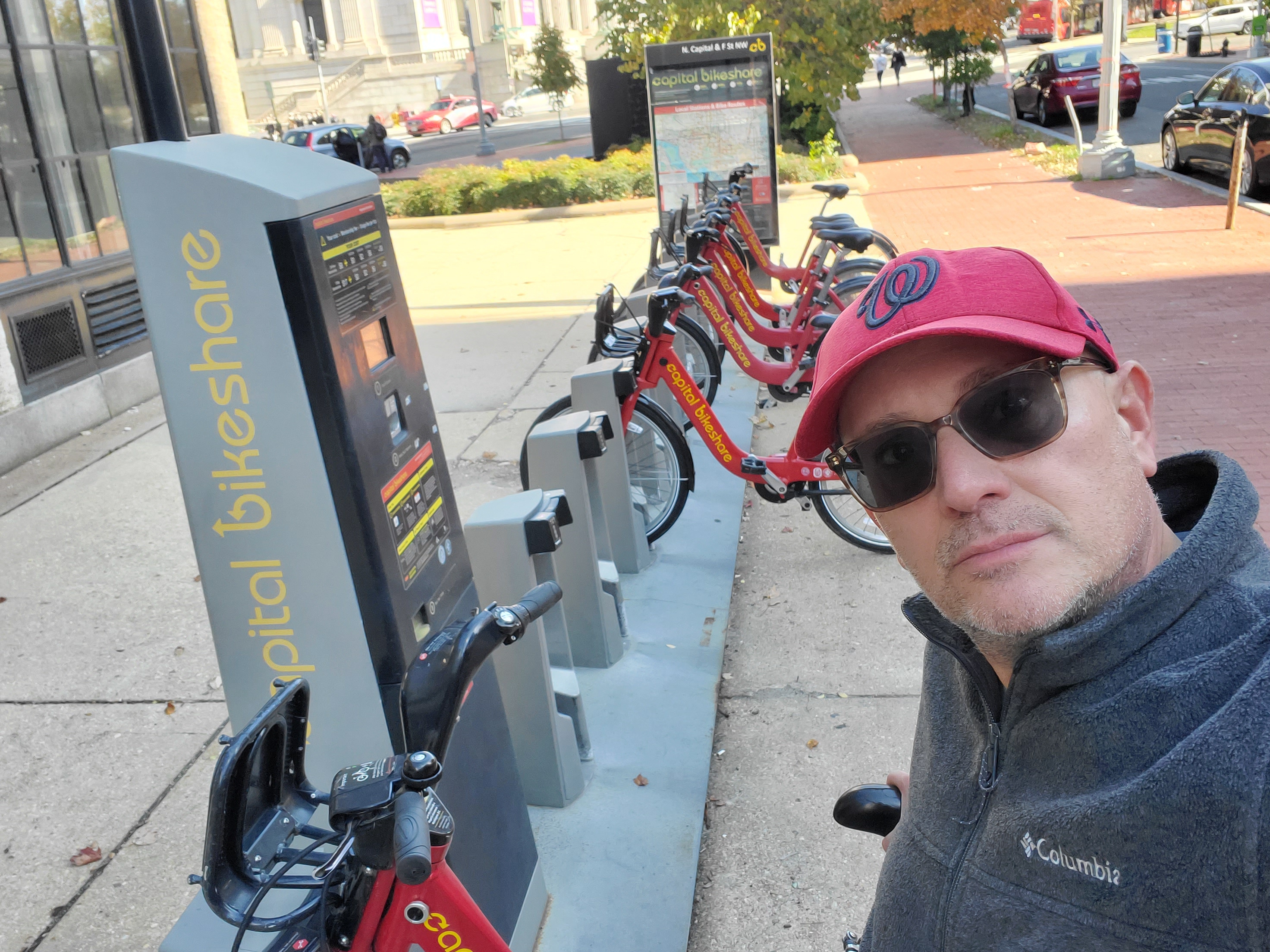
Image: Capital Bikeshare in D.C. is one of the more successful bike share programs in the U.S.
While local stay-at-home orders and crunched municipal budgets may put many of those plans on hold, there’s plenty of reason to be optimistic that bicycle commuting, and life on two wheels in general, will soon enjoy a renaissance.
Commuters’ skittishness to return en masse to public transportation systems is part of this story. But with social distancing becoming the norm, even long after it passes as government-mandated local decree, municipal leaders and citizens alike now see the empty sidewalks and streets. And therein during these bleak times is a silver lining of opportunity.
Opportunities in empty streets
“COVID-19 presents a wholly different challenge,” wrote Allison Arieff last month in the New York Times, adding that it’s time for local officials to decide “how to think about bringing people together while also needing to keep them apart.”
City officials are rising to that challenge, as mayors from Oakland, California, to New York City are closing mile after mile of city streets to cars and relinquishing them to pedestrians, skateboarders and cyclists. So if and when this crisis passes, these same local officials will confront a problem that actually will be a nice one to have: how to keep these same streets and neighborhoods closed to traffic as the odds will be high that residents won’t want to go back to how they lived before.
In some cities, the future is already here. Some bike share programs are already expanding, such as New York’s Citi Bike program, which last month expanded to more areas including the Bronx.
Image credits: Leon Kaye
At a Time of Pain, Nike and Adidas Show How We Can Start Coming Together


As chaos engulfed many of America’s largest cities over the past week, with the pain intensifying over the weekend, it’s clear the shambles we see in neighborhoods across the country are the result of leadership at the very top being in shambles. Commentators including Don Lemon and Trevor Noah have eloquently made the case for us as a society to look inward while calling for those with power and status to speak up or speak out. So yes, right now the bar for leadership is quite low, but a simple tweet and retweet from Nike and Adidas nevertheless stand out as a signal for the business community to stand up for what is right.

In case you’ve missed them, the messages are as profound as they are succinct.

Granted, one can argue these are just words. But Nike has already stepped into the fray with its past campaigns featuring Colin Kaepernick, the NFL quarterback who was blackballed after repeatedly taking a knee to protest racial inequality and police brutality – an image that is now more poignant than ever before. The fact Adidas backed up and supported one of its fiercest competitors helps amplify the message to the business community that the ways in which we’ve been doing things just don’t work any longer – and haven’t been in the first place.
Evidence suggests corporate leaders know it’s time to speak out. Late last week, the executive coalition CEO Action for Diversity and Inclusion released a statement that would have been unthinkable a year ago, or in reality, even a week before:
“The horrific events of the past month involving George Floyd, Christian Cooper and Ahmaud Arbery underscores that racism – both conscious and unconscious – are still serious problems in our country. As leaders in the business community, we must acknowledge what Black people are facing and actively work to reduce bias in our workplaces and build inclusive communities. This is our responsibility and our future.”
Again, 63 words are hardly enough to move the needle, but as we closed out a gut-wrenching weekend made worse by a vacuum in leadership, we need to start somewhere. "The CEO Action Statement on Recent Racist Acts” is certainly step in the best direction.
The time is now for companies to not just follow the words and tweets of Nike and Adidas, but to ramp up meaningful action. Amped up promises of “diversity and inclusion” won’t cut it. Writing a check to help communities rebuild cleans up the problem temporarily but won’t solve a scourge that, depending on one’s point of view, has been around anywhere from 50 years to 400 years. Pledging funds to help protesters who have to put up bail after getting arrested? Well, that’s getting warmer. As one of our colleagues noted, the Band-Aid has been ripped off, and this time, it won’t heal itself.
The bottom line is that the U.S. business community needs to stop fearing those in power — and instead, toe its own line and put resources, people and brand loyalty into first, having an honest conversation about what is happening in this country; and next, making it clear that the weaponization of race in this country has got to stop – now.
Image credit: Tony Webster/Wiki Commons
Signs of Growth in Regenerative Agriculture as Beer Maker Steps In


Just a few years ago, regenerative agriculture was largely a niche effort. Now, leading industry stakeholders are pushing it into the mainstream. In the latest development, last week Anheuser-Busch has reported promising results from a new partnership with the sustainable agriculture firm Indigo Agriculture. The partners are already looking forward to additional improvements as the project continues into a new growing season.
Reducing commodity inputs and price volatility through regenerative agriculture
Regenerative agriculture is a holistic approach that shares features with organic farming, but has its own set of priorities and systems. The primary aim is to build up soil and improve soil health, while sequestering carbon, preserving local water resources and improving air quality.
In meeting those goals, regenerative agriculture also aims to reduce the use of purchased fertilizer, fuel, and other inputs involved in the conventional practice of modern agriculture.
Farmers can benefit from regenerative practices through increased yields and long-term improvements in soil quality, while also reducing costs and attracting eco-conscious customers.
An improvement in community relations is another potential benefit, due to more sustainable use of local water resources and reduced impacts on air quality.
The ripple effect on commodities buyers like Anheuser-Busch is to reduce price volatility related to spikes in the cost of fuel and other inputs. In the age of climate action, regenerative agriculture also supports brand reputation.
Price stability and brand reputation have been the factors motivating major businesses to transition to clean power, and that same bottom line element appears to be attracting businesses to regenerative agriculture, too.
Beer maker plunges into regenerative agriculture
Regenerative agriculture is a relatively new trend, and so far, it has been practiced primarily on a small scale. With Anheuser-Busch’s support, it could take hold in large scale operations as well and have a significant cumulative impact on global environmental health.
The new partnership between the beer maker and Indigo Ag may surprise some beer drinkers, because it involves rice rather than the more familiar beer making ingredients like barley and wheat.
Nevertheless, rice it is. According to the brand, Anheuser-Busch happens to be the single largest user of rice in the U.S., having adopted the grain in 1876 to set its signature Budweiser brand apart from others.
For an initial test of their partnership, Indigo Ag and Anheuser-Busch set a goal of 10 percent improvement in water, nitrogen, and greenhouse gas impacts for growing 2.2 million bushels of rice. The 10 percent goal seems relatively modest. However, the overall result would be significant, considering the rate at which the beer maker consumes rice. According to the company, its mill in Jonesboro, Arkansas currently processes rice at the clip of 2.6 million pounds daily.
As it turned out, the effort exceeded expectation. Last week, the two partners announced their first-season results. Water usage decreased 23.7 percent compared to the regional average, methane emissions decreased by an average of 26.6 percent and nitrogen application decreased by 13.3 percent.
Grower profitability also increased, by up to $27 per acre.
“The cost reductions associated with decreased water and fertilizer use from these beneficial growing practices, coupled with a price premium to reflect the specialty attributes associated with how the grain was produced, significantly improved growers’ profitability, reinforcing the effectiveness of a systems approach to de-commoditizing agriculture,” Anheuser-Busch explained.
Regenerative farming and renewable energy
Based on that success, last week the partners also announced that the project is continuing into the current growing season. It has also expanded to cover a crop of 2.7 million bushels.
This season’s project includes additional support for growers, leading to the potential for improving upon last season’s results. In addition, farmers in the program can benefit from Indigo Ag’s Indigo Carbon abatement and sequestration initiative for on-farm emissions.
Anhueser-Busch isn’t the only leading company testing the waters of regenerative farming.
The movement has also caught the eye of the solar industry, which is beginning to leverage the benefits of pairing solar panels with grazing, pollinator habitats and other complementary uses under the new field of agrivoltaics.
In terms of land use, that is a significant improvement over the conventional placement of solar panels on farmland, in which the solar arrays are mounted close to the ground, effectively precluding any other operations.
Now researchers are finding that solar arrays can also accommodate grazing, pollinator habitats and other uses. The adjustment includes raising the solar panels a few more feet off the ground. It can also involve staggering the panels to allow more sunlight. The partial shade creates a beneficial microclimate that can enhance plant growth and conserve water, while reducing the need for fertilizer.
Tennessee-based Silicon Ranch, for example, is already pitching the concept under its proprietary “Regenerative Energy” trademark.
That is a particularly significant development in the scaling-up of agrivoltaics, because Silicon Ranch specializes in large, utility scale solar arrays.
The company’s latest project will span 2,400 acres at White Oak Pastures, a 152-year-old family farm in Georgia that conceives regenerative agriculture as part of a “radically traditional” approach to farming.
Another major company that could play a role in scaling up agrivoltaics and regenerative agriculture is the global oil giant Royal Dutch Shell, which bought a major stake in Solar Ranch two years ago.
Signs of redoubled force in the global energy transition have been building despite the COVID-19 crisis, and now it seems that agriculture is also poised for a similar leap into a more sustainable future.
Image credit: Pexels
U.S. Water Infrastructure Has One Dam Big Problem
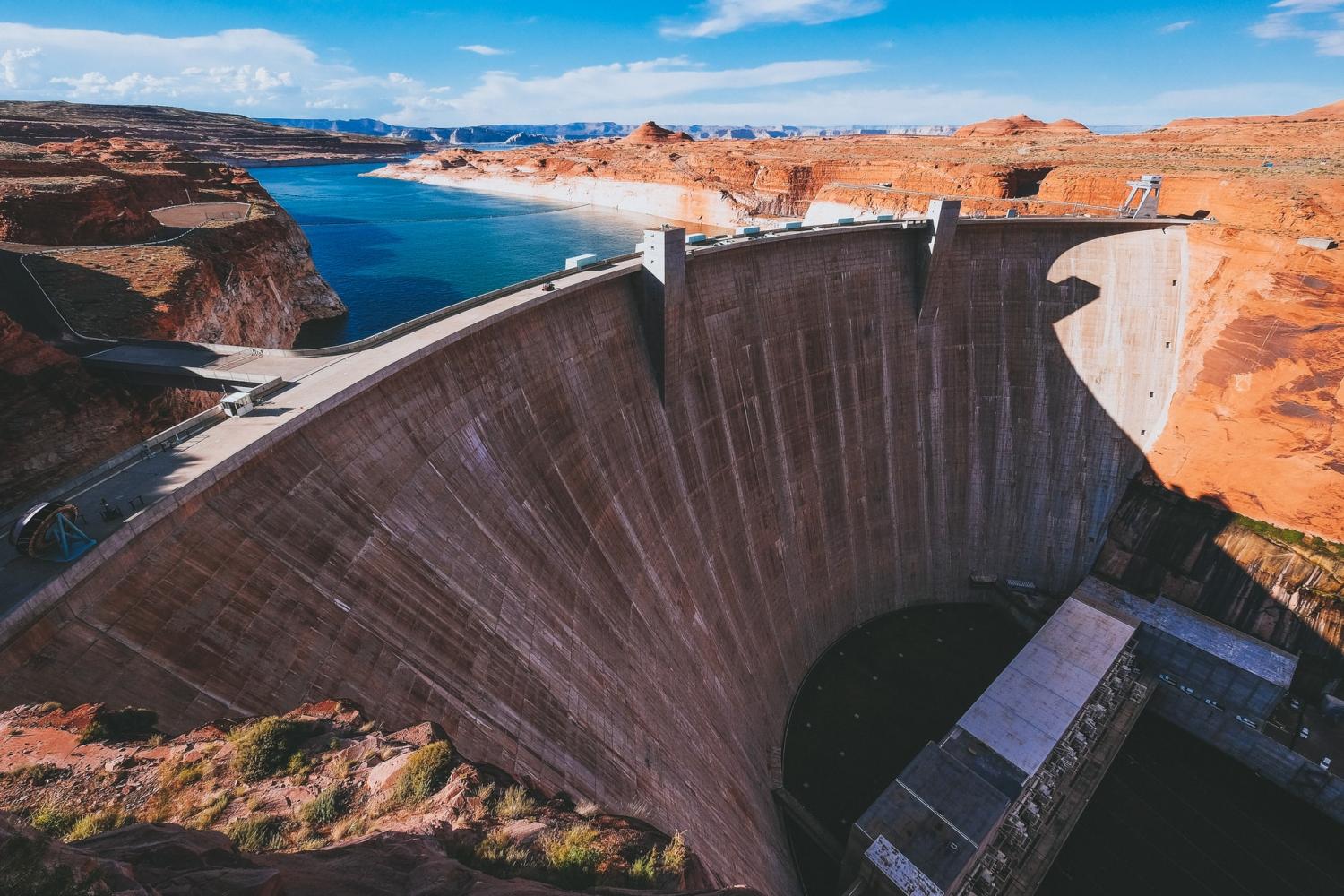

While most of the world remains at home during the COVID-19 pandemic, the impacts of climate change have continued unabated. With the official start of hurricane season starting today, June 1, there is rising concern about disaster relief in these uncertain times. Unfortunately, our nation’s water infrastructure is bending under the pressure, and in many places, it’s breaking.
Michigan shows how water infrastructure is going awry
Case in point is Michigan, where privately-owned two dams recently failed after several days of heavy rains. Both dams were built in 1925, and within the next five years, 80 percent of Michigan’s dams will have reached their intended design life. The two dams had repeatedly failed to meet federal dam safety requirements and had lost their licenses in 2018.
The failures of those dams in Michigan reflect how the oversight of dam safety and water infrastructure is a smorgasbord of rules and regulations. State agencies regulate the bulk of the nation’s dams, of which about 65 percent are privately owned. Maintenance and upgrades are the responsibility of the owners, and the owners and local emergency management officials must handle any emergency, like the catastrophic failures in Michigan. Only about 10 percent of U.S. dams are federally regulated. Every state bar one has a dam safety program, through which they regulate dams in their jurisdiction. Many of the dam safety programs are understaffed and underfunded—Michigan’s program only has two staffers to inspect the safety of more than 1,000 dams in the state.
Couple that with the fact that Fourth National Climate Assessment noted that annual precipitation has increased 15 percent since 1960, and winter and spring precipitation are projected to increase up to 30 percent by the end of this century. “Imagine,” Shana Udvardy, climate resilience analyst at the Union of Concerned Scientists told me, “these dams were designed with maximum flood capacity and spillway based on conditions from 95 years ago and were not updated even to today’s climate conditions even though they had multiple warnings, and you get a picture of how unsafe these dams really were.”
Coastal areas and hurricanes impose their challenges
Inland dams near rivers and other waterways that are predicted to increase in the number of flooding events under climate change are only part of the challenge. As we head into hurricane season—which is predicted to be above average in 2020—states often in the path of hurricanes will have high winds to add to the stress of flooding threats.
Of the eight states plus Puerto Rico that are most often in the bullseye of Atlantic storms, two—Texas and North Carolina—have the most number of high hazard dams, meaning high risk of loss of human life if they fail. Those two states follow Missouri, which takes the top spot. Both Texas and North Carolina have been battered by category 4 hurricanes in the within the past three years and infrastructure took a hit in both places, underscoring the need for more upgraded and more resilient water infrastructure. Neither state is guaranteed to miss out on this year’s hurricane season.
The ongoing pandemic will only exacerbate compound climate risks like those associated with hurricanes. Public health responses to hurricanes and flooding are compromised and stretched thin and could have additional impact on the economic pressures confronting communities that are already stressed. Like hurricanes and other natural disasters, the pandemic hits the most vulnerable communities, which in turn will be less able to quickly rebound from the effects.
Resilient infrastructure is a must
The solution will require involvement of all the interested parties: state and federal government and the private sector. “The private sector has a critical role to design, build, repair, and maintain infrastructure,” Udvardy said. “But as the Michigan tragedy shows, this will not likely happen without more stringent state and federal authority and regulations.”
Some advocates have suggested including water infrastructure investments in any future pandemic recovery money, creating jobs while shoring up infrastructure, much the way the Recovery Act did during the last recession. Some regulatory changes could help open the way for more public and private investment into smarter, more sustainable infrastructure, targeting especially vulnerable communities.
For example, Congress could increase funding for the Federal Emergency Management Agency’s (FEMA) Pre-Disaster Hazard Mitigation Program grants. Creating a transparent, reliable pipeline for these grants is a cost-effective strategy to enable communities, governments, and developers to reduce the impact of flooding when it happens. According to the National Institute of Building Sciences the benefits of acquiring and demolishing building exposed to riverine flooding outweighs the costs 7 to 1, for a total of $82 billion saved. The bottom line is: Investing in safe, resilient upgrades and infrastructure now will prevent the incalculable loss of money and lives if we fail to do so.
Image credit: John Gibbons/Unsplash
Get Inspired: Sustainability Headlines You May Have Missed This Month


(Image: Nike's newest sustainable shoe collection is made from post-consumer and factory waste.)
As the coronavirus continues to spread around the world, at times it feels challenging to focus on anything else. Almost half of U.S. adults say they discuss the pandemic with others "most" or "almost all" of the time. Yet around 7 in 10 say they need to take regular breaks from coronavirus-related news, as heartbreaking stories of pain and suffering weigh on our minds and tax our mental wellbeing.
If you could use a reprieve, it may cheer you to learn that sustainability headlines from major companies and environmental groups haven't stopped, even though you may not have heard about them. Read on for a few you might have missed this month.
Nike launches shoe line made from waste
This week Nike teased the launch of what it calls an "exploratory footwear collection" made from 85 to 90 percent factory and post-consumer waste.
The brand playfully labels the mix of recycled materials "space junk" due to its unusual appearance, but no, it's not made from the ever-growing collection of space debris orbiting the Earth. It's actually a blend of recycled polyester and recycled rubber, as well as standard foam. The Space Hippie line, which goes on sale June 11, is Nike's lowest-carbon collection to date.
Danish companies team up to produce sustainable fuels at scale
A group of large Danish companies — including Ørsted, Moller-Maersk, Copenhagen Airports and Scandinavian Airlines (SAS) — have teamed up to produce sustainable fuels at an industrial scale.
The companies plan to construct a large facility to produce hydrogen and bio-based fuels for maritime, air and road transport in the Copenhagen area. They say the plant could start operations in 2023 and be able to produce 250,000 metrics tons of fuel annually by 2030.
Mercedes' parent company pledges carbon-neutral production by 2022
German luxury automaker Daimler, the parent company of car, bus and truck brands including Mercedes-Benz, pledged to eliminate carbon emissions from its personal car manufacturing process — including battery production — by 2022. A previous goal from the company applied only to European manufacturing operations, but its most recent announcement on Monday takes the pledge worldwide.

(Image: Each piece in H&M's newest dress collection is made from at least 50 percent sustainable materials such as organic cotton and recycled polyester.)
H&M rolls out sustainable fashion lines for summer
If you're itching to shop while sheltering at home, H&M has you covered. Customers can choose from not one but three sustainability-focused lines as part of the fast-fashion retailer's new collections for summer.
H&M's newest line of dresses is made primarily from sustainable materials like organic cotton and recycled polyester. Its new activewear line goes even further, using only sustainable materials like organic cottons and recycled polyesters, nylons, and polyamides. A swimsuit collection developed in collaboration with the all-women surf society Women + Waves also features at least half recycled and organic materials in each piece. The company says lines like these bring it one step closer to its goal of becoming 100 percent circular.
Walmart enters the clothing resale market
The fashion resale segment is booming and grew 21 times faster than the overall retail market between 2017 and 2019. A host of major brands — including Taylor Stitch, The North Face and REI — are already involved. Now, we can add the most mainstream of mainstream retailers to the list.
Walmart.com started selling previously owned clothing and accessories on Wednesday thanks to a partnership with the resale platform ThredUp. Its curated collection includes nearly 75,000 pieces from brands you won't find in Walmart stores, including Nike, Levi Strauss and Michael Kors.
Google AI breaks up with fossil fuels
Google will no longer develop custom artificial intelligence (AI) tools for fossil fuel extraction, per an announcement last week. The move comes shortly after a Greenpeace report detailed how tech giants like Google use AI tools and server space to help fossil fuel companies locate and extract oil and gas.
Greenpeace, which argued that Google's history of providing this type of technical support flies in the face of its stated goals to tackle climate change, praised the decision — and called on the other companies it referenced in the report, Microsoft and Amazon, to follow suit.

(Image: On regenerative ranches like Thousand Hills Lifetime Grazed, cattle are allowed to roam and graze as they would in the wild, providing benefits for the land as well as for animal welfare.)
Timberland looks to establish a regenerative leather supply chain
Outdoor gear brand Timberland will work with the Savory Institute, a nonprofit focused on the regeneration of grasslands, to build up a regenerative leather supply chain for the footwear and apparel industry. This builds on the brand's existing partnership with Other Half Processing, which sources hides from Thousand Hills Lifetime Grazed regenerative beef ranches (pictured above).
For those who aren't familiar: Regenerative agriculture practices mimic how plants, wildlife and soils interact in nature, boosting carbon sequestration and water retention in the soil, among other ecological benefits. Through these partnerships, Timberland says it's working to "identify, aggregate and connect" regenerative ranches with its large-scale tannery partners, while co-funding the Savory Institute's Ecological Outcome Verification, which measures the tangible benefits on ranch land.
Timberland will release a collection of boots using regenerative leather sourced from Thousand Hills Lifetime ranches later this fall, with the intention of "scaling the program significantly over time."
CDP reports a jump in companies asking their suppliers for environmental transparency
The environmental nonprofit CDP reported a 24 percent jump in corporate partnerships last week. Major companies work with CDP to calculate, mitigate and disclose their exposure to environmental risks, particularly climate change, water scarcity and deforestation, both within their own operations and in their supply chains.
Nike, Airbus, Sainsbury’s and Ørsted are among the 30 large companies that started working with CDP to manage their supply chains for the first time this year. The nonprofit's supply chain membership now numbers more than 150 companies with a combined procurement spend of over $4 trillion. These firms have already sent out requests to more than 15,000 global suppliers, asking them to disclose key risk information around climate, water and forestry.
Utility company Southern Co. targets net-zero carbon by 2050
Southern Co. is one of the largest U.S. utilities with 9 million customers across Alabama, Georgia, Mississippi, Virginia, Tennessee and Illinois. For decades, it was one of the nation's largest carbon emitters and frequently opposed environmental protections, the Natural Resources Defense Council (NRDC) observed. The good news is: That may soon change.
On Wednesday, CEO Tom Fanning made a shareholder commitment that Southern would reduce the net carbon emissions from its electric and natural gas operations to zero by 2050. NRDC praised the move, calling it "historic" and predicting it could spell major change in the way energy is sourced and delivered in the U.S. Southeast — and perhaps catalyze a shift in the utility sector overall.
"Fanning’s announcement to shareholders confirms that the case for eliminating climate-warming carbon pollution cannot be denied," wrote Sheryl Carter and Luis Martinez of the NRDC's climate and clean energy program. "We hope that consensus marks a beginning of the end to ideological and partisan discord over these issues."
Images courtesy of Nike, H&M and Thousand Hills Lifetime Grazed via Timberland
This Pandemic Can Lead Us to Build an Economy That Works for All


Imagine this headline: “American business community commits to competing our way out of the COVID-19 pandemic.”
That doesn’t make any sense. How about this one: “American business community collaborates to overcome the COVID-19 pandemic and commits to an economy that works for all.” That hints at a real solution: building solidarity and mobilizing our talents and capital in a way that not only helps us mitigate the current catastrophe but also starts building a far more resilient next economy.
This is not about volunteerism or individual corporate responses to communities in crisis. Those things are wonderful and we need them—but the limits of the unilateral approach are well demonstrated. The times call for a much deeper, systemic approach. When this pandemic abates, we will still face the crises we began this year with: climate change, gaping inequality, homelessness, lack of affordable education and healthcare, and limited access to capital come immediately to mind.
While the planet can temporarily breathe a little more freely now that billions of people are restricted in their movement, the pandemic is devastating from both a health and an economic perspective—especially for lower-income people and communities of color. In a society where healthcare is treated as a privilege rather than a universal right, a crisis like the one we’re experiencing exacerbates the underlying inequities of an economy that doesn’t work for everyone.
To address this crisis and build the resilience we need to meet the next one, we must do more than tinker around the edges: we need new economic models that move us away from extracting value for the few toward a regenerative approach to human and ecological resources that is inherently adaptive and favors collaboration in the interest of the whole.
Major players in the finance sector and elsewhere should be taking this on—and I hope they will—but we don’t have to wait for them to lead. Smaller, nimbler enterprises are developing and demonstrating better ways right now. RSF Social Finance can contribute three capital-flow models we have refined over the past decade that we believe can be modified to scale.
Community pricing: thinking bigger than self-interest
We abandoned LIBOR in 2009 and began setting our own rate for the RSF Social Investment Fund through a collaborative process of face-to-face quarterly meetings involving investors, borrowers and RSF staff. These Community Pricing Gatherings play a significant role in determining the interest rates investors receive and borrowers pay, as well as RSF’s share of the revenue.
The heart of these meetings is asking borrowers to detail the business consequences of a rate change and investors to share what a higher (or lower) interest rate would mean for them. Conventional economic theory tells us that investors will always want a higher return and borrowers will always want to pay a lower rate. Community Pricing Gatherings show that is not the case—money and the price of money can be in service to goals larger than self-interest. We’ve heard investors say, “I don’t need more if it has that consequence for you.” And we’ve heard borrowers say, “We could afford to pay more” if that increases the pool of money available to everyone.
This model allowed us to do something pretty extraordinary things to help our social enterprise borrowers weather COVID-19. Investors at our March 19 gathering unanimously decided to cut their interest payments in half so that borrowers could pay less and RSF could create an emergency fund to help those enterprises most at risk of collapse. Their action demonstrates how we can mobilize solidarity on a community level in a crisis.
The fundamental principle at work here could be applied to many situations involving two sides perceived as having opposing interests and habituated to maximizing their own narrowly defined advantage. The magic lies in having an honest and full discussion that reveals costs and benefits to everyone. Seeing how a decision affects a whole system creates a real shift in perspective about what our true needs are.
Integrated capital: flipping to a demand-driven approach
Our integrated capital approach bundles financial, social and intellectual capital for social entrepreneurs who are solving complex social and environmental problems. The financing tools—including loans, loan guarantees, investments and grants—are familiar to impact investors as “blended” or “full stack” capital. But the human elements, such as network connections and advisory support, are just as important.
Integrated capital addresses the funding challenges social enterprises face in a number of ways: It allows for longer development times by including some types of investment that don’t need to make a return, such as grants. It gets enterprises through the “valley of death,” where they have a promising business model, technology, product or service, but need more capital to realize its potential and don’t qualify for traditional financing. It provides the technical expertise they need to build a platform for growth. And when community foundations and local investors participate, integrated capital creates a community commitment to the enterprise’s success.
The key concept here is to provide capital based on what the needs are, rather than forcing entrepreneurs to fit their vision to the capital being offered—which often distorts the vision and reduces chances for success. It’s a demand-driven rather than a supply-driven approach. (See examples here and here.)
Shared gifting: shifting the power dynamic
Foundations are sitting on an estimated $1.5 trillion pot of money, and they’re under increasing pressure to invest more of it for impact as well as to grant more of it out—especially in response to the current crisis. How it is mobilized may be as important as how much. We don’t even know what the economic impact of COVID-19 is going to be or what it’s going to do to communities. Listening to what communities say is needed is likely to deliver a better result than applying the same old tools.
The Shared Gifting model is one way this can happen. The typical spectrum of grantmaking practices runs from unilateral (we’ll just tell you about our grant decisions) to consultative (soliciting community advice and concerns) to involving (two-way communication that leads to joint decision-making). Shared Gifting practice is beyond all that. It shifts the power dynamic.
In our adaptation of the approach, six to 10 local nonprofits (selected through a community nomination process) spend a day together and decide how to divvy up a pot of money among themselves. Each participant gets an equal share of the funds; they keep 20% of their share and distribute the balance according to their own criteria. They review each other’s proposals and ask questions about each other’s work. We encourage participants to be open and honest with the group about how they made their funding decisions. The group also decides how participants will report back on their use of the gift.
The goal of shared gifting is to transform philanthropy by giving nonprofit leaders the power to make decisions about what their community needs—they are the experts on that topic. By shifting grant-making authority from the holders of capital to a circle of peers, we can free up the creative power of communities to find and carry out transformative solutions.
It’s time to mobilize to overcome this pandemic
Tapping community knowledge, solidarity, and resources is central to each of these strategies, and most of us in business and finance are in position to do that—we just need to reach out. The still-unfolding COVID-19 pandemic is challenging all of us in innumerable ways. I hope we can respond by breaking through the mental barriers we put around ourselves and our businesses. A common refrain these days is “We’re all in this together.” Let’s act like it. In collaboration with our communities, we can mobilize our talents and capital to not only weather this crisis, but also start to heal what is broken.
Image credit: Julian Wan/Unsplash
Join 3p's 'Learn From Home' Series Featuring Medtronic CEO Geoff Martha on June 16
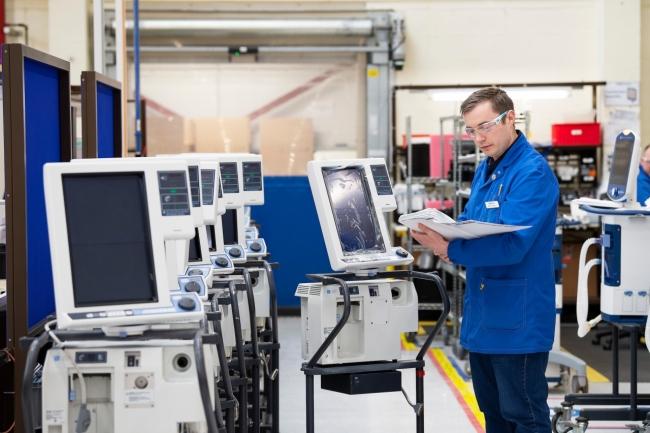
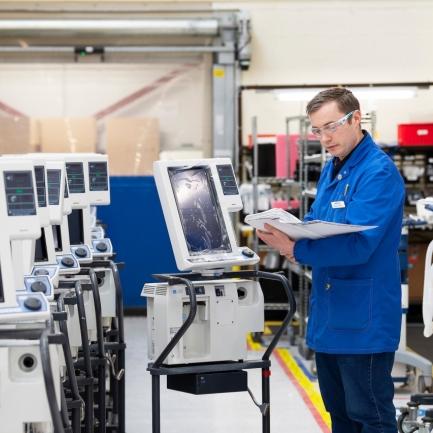
TriplePundit and 3BL Media will feature Medtronic CEO Geoff Martha on June 16, 2:00 p.m. ET (11:00 a.m. PT), as part of the “Learn From Home” live event series.
Be sure you join 3p’s senior editor Mary Mazzoni for “Stories & Strategies for Putting People First,” a live interview with the new leader of one of the world’s largest medical technology companies, with 90,000 employees in 150 countries. Register here.
“Geoff Martha took the reins of Medtronic in April during the first wave of the COVID-19 pandemic and demonstrated bold ESG leadership immediately,” said Dave Armon, CEO of 3BL Media. “We are honored to welcome Geoff as he shares the story with Mary Mazzoni and a live audience.”
In March, Medtronic took the unprecedented step to publicly share the design specifications for its PB560 ventilator, an affordable and portable ventilator that can be used in clinical settings and at home, as part of the company’s efforts to enable rapid manufacturing by other companies.
Since that announcement, reactions by both the public and private sectors were swift. Foxconn soon disclosed that it would pivot manufacturing operations at its Wisconsin plant to assemble ventilators in a partnership with Medtronic. In addition, the U.S. Food and Drug Administration (FDA) had reportedly approved the company’s effort to market the PB560. To give a frame of reference, the cost for most ventilators on the market can run anywhere from $25,000 to $50,000. The PB560 is priced under $10,000.
Other ventilator manufacturers also shifted focus in order to meet surging global demand. Philips, for example, said it had made a deal with the White House to make up to 43,000 ventilators. GM and Ventec finalized a deal to manufacture 30,000 ventilators at a cost of almost a half billion dollars. The German healthcare device manufacturer Draeger announced this spring that it would try to move workers around and add shifts so it could help meet demand. And GE workers have been vocal about their desire to shift gears so that the company’s healthcare division can ramp up production of these devices.
But as of today, Medtronic stands apart for its decision to make one of its models available for licensing without a fee.
Martha and Mazzoni will discuss how Medtronic has shared technology, worked even closer with partners, and ensured the safety of its global workforce during the pandemic. Live Q&A will follow the interview. Professionals working in corporate responsibility, ESG, sustainability, communications, investor relations, marketing and other senior leadership roles are invited to attend.
Image credit: Medtronic/3BL Media
40 Million Global Health Professionals Call For a 'Green Recovery' From COVID-19: Will Governments Listen?


It seems rallying cries for a so-called "green recovery" from the coronavirus are building by the day. As governments spend trillions of dollars to cope with the pandemic and chart a way forward, advocates ranging from business leaders to environmental NGOs have thrown their weight behind policies that leverage stimulus funds for sustainable development. This week, healthcare professionals entered the mix.
On Tuesday, more than 350 health organizations signed an open letter to world leaders in the G-20, which represents both industrial and developing nations, calling for a "healthy recovery" that limits air pollution and mitigates climate change.
The groups represent over half of the global medical workforce, or more than 40 million health professionals. They called on G-20 leaders to engage their chief medical officers and scientific advisors directly in the production of COVID-19 stimulus packages — and to solicit their feedback about potential implications for public health and wellbeing.
"The enormous investments your governments will make over the coming months in key sectors like health care, transport, energy and agriculture must have health protection and promotion embedded at their core," the groups wrote in their letter.
To understand what that means in practice, let's dive into the letter — and what experts are saying about it — for a closer look.
What health professionals mean by a "green recovery"
Before the pandemic, air pollution from traffic, energy production, waste incineration and agriculture was linked to 7 million premature deaths each year, the health organizations observed in their letter. Around 780 million people lacked access to clean drinking water. And 800 million people were already experiencing direct impacts from climate change, with billions at even greater risk if current emissions pathways continue.
"A truly healthy recovery will not allow pollution to continue to cloud the air we breathe and the water we drink. It will not permit unabated climate change and deforestation, potentially unleashing new health threats upon vulnerable populations," the groups including the World Medical Association and the International Council of Nurses told G-20 leaders. "To achieve that healthy economy, we must use smarter incentives and disincentives in the service of a healthier, more resilient society."'
Their vision for a green recovery is bold and includes "major reforms to current fossil fuel subsidies," shifting the majority of funds toward renewable energy development.
For perspective, that would be a lot of cash: Global governments funneled more than $400 billion in direct subsidies to fossil fuel companies in 2018, according to the International Energy Agency (IEA). When factoring in world leaders' failure to put a price on carbon, the International Monetary Fund (IMF) estimated that governments — and their taxpayers — back the fossil fuel industry to the tune of a staggering $5 trillion each year.
The health groups pointed to a 2020 study from the International Renewable Energy Agency (IRENA), which estimates that shifting the energy system away from fossil fuels could spur nearly $100 trillion in global GDP gains between now and 2050.
“Climate change poses an imminent and serious threat to the health of the world’s population," Annette Kennedy, president of the International Council of Nurses, said in a statement. "We are calling on governments to make sure that pollution levels do not return to previous levels, so that our children and grandchildren will be able to grow up healthily in a livable and sustainable climate. Only by investing in both healthcare and the environment can we create a sustainable future.”
Worker rights are also on the agenda, as the groups call for "access to well-paying jobs that do not exacerbate pollution or nature degradation." More than 1.1 million people work in the fossil fuel industry in the U.S. alone. Like workers across virtually every sector, many have lost their jobs amid coronavirus lockdowns. Groups including the World Resources Institute (WRI) say the recovery period is an ideal time to ensure a fair transition for fossil fuel workers, including coverage for income, training and relocation for those facing job loss.
Further, a recent economic analysis from the Sierra Club indicates a green recovery in the U.S. — aimed at rethinking energy production, transportation, manufacturing and land use — could create 9 million good-paying jobs every year over the next decade. A global analysis from Oxford University similarly concluded that green recovery plans have potential for the highest returns on investment in the form of job creation, economic stimulus, and public and environmental health.
"Tackling climate change has the answer to our economic problems,” Cameron Hepburn, director of the Smith School of enterprise and the environment at Oxford University and lead author of the study, told the Guardian.
Health experts seem to agree. “Health professionals are at the frontlines of this emergency, and we are seeing the immense loss of lives because of acting too late,” said Miguel Jorge, the president of the World Medical Association, in a statement. “We know now more than ever that healthy lives depend on a healthy planet. As we walk on the road to recovery, we need to build a system that will protect us from further damage."
Will governments listen?
Whether world leaders will heed the call for a green recovery is yet to be seen, but national governments including the European Union and South Korea have indicated that some elements of a green recovery plan may be on the table.
“There will be a difficult debate about the allocation of funds," German Chancellor Angela Merkel said at a virtual climate meeting of 30 world leaders last month, as quoted by the Guardian. "But it is important that recovery programs always keep an eye on the climate. We must not sideline climate, but invest in climate technologies.”
The next G-20 summit is set for November. Empowering women and children, protecting the environment, and ensuring equitable access to technology are all on the agenda.
Image credit: Roman Koester/Unsplash
California’s Plastic Bottle Redemption System Is in Crisis


The Golden State's landmark California Beverage Container Recycling system, enacted in 1987 to increase recycling rates for plastic, glass and aluminum beverage containers, is facing a crisis. Plastic bottle redemption rates have fallen from a high of 85 percent to just 75 percent last year, as recycling collection centers close across the state. If legislators don’t work on a fix soon, it could get worse.
“The key factor we identified to be contributing to declining return rates was the failure of the current program to ensure that there are sufficient convenient redemption points,” said Sarah Edwards, CEO of Eunomia North America, in a press statement. “The current container recycling program needs reform.”
What can be done to boost plastic bottle redemption rates in the Golden State?
A report just released by the Changing Markets Foundation and National Stewardship Action Council argues that unspent funds should be utilized by CalRecycle, the state waste management authority, to enhance plastic bottle redemption options and invest in pilot programs. Then, they argue, the bill can hit its long-term goal of a 95 percent recycling rate in the state.
“Modernization of the bottle bill will also bring significant environmental benefits and reduce financial burden on public authorities that are spending half a billion dollars on clean-ups,” said Nusa Urbancic, Campaigns Director of Changing Markets, in a press statement. “Unlocking these benefits, California could, once again, show environmental leadership it is famous for.”
The irony is that California’s bottle system is one of the few functioning plastic recovery programs in the country. Since it was enacted, it has resulted in more than 400 billion beverage containers being recycled. What’s happening in California, though, is part of a larger issue facing the country as a whole. Simply put, the United States is facing a plastic crisis.
Recycling systems can’t keep up with mounting plastic waste
Over the past decade, plastic production and consumption has boomed, but recycling and recovery systems have not. In fact, the national recycling rate has plateaued – and it is the recycling of primarily plastic that is lagging. Only 4.4 percent of plastic was recycled in 2018, as compared to 27 percent for glass, or 66 percent for paper. Part of the problem is the multitude of plastics that exist, but another factor is the limited market for recycled plastic to re-enter the economy. Virgin plastic, produced from oil, is just too cheap.
The end results include the growing mounds of plastic filling up landfills. It got worse since 2018, when China stopped accepting plastic imports. Many cities and states relied on their ability to send plastic to China, as they lacked the facilities to recycle or process it here. China’s ban left many municipalities across the country with a problem – nowhere to send, or, soon, store plastic. Much of it ended up in landfills, and some have even stopped accepting plastic for recycling entirely.
The failure of the California plastic bottle redemption system to keep up is partly a failure of the state, but a big share of the responsibility falls on companies like Coca-Cola, PepsiCo and other beverage producers. For years, they have talked up their green credentials – PepsiCo, for instance, made a commitment to increase their beverage container recycling rate to 50 percent by 2018. Coca-Cola has said it has a goal to collect and recycle a bottle or can for each one it sells by 2030.
But by and large, beverage companies have failed to deliver, and a big part of that is their limited investment into recycling or investments in systems that can help recover and reuse plastic.
Beverage companies’ rhetoric isn’t matching their actions
“Due to public concern about the plastic pollution crisis worldwide, we are witnessing a parade of corporations scrambling to look greener by putting forward false solutions to justify their addiction to single-use packaging,” said Greenpeace USA Global Project Leader Graham Forbes in a press statement.
This is why, even though we know we are using too much plastic, and that we need to cut back on single use plastic in particular, the plastics industry is building new plants to feed our plastic addiction. What’s even worse is the sector’s push to use the ongoing COVID-19 pandemic as an excuse to have cities, states, and other regions rescind plastic bag bans – despite little to no evidence of any public health benefit.
For now, California can be a model by fixing the broken container deposit system, and then passing the even more ambitious California Circular Economy and Plastic Pollution Reduction Act, now currently awaiting vote in Sacramento and already seeing fierce opposition from the plastic industry. The bill, if passed, would regulate all types of single-use plastic packaging, not only bottles. Only then can California play its role in solving the global plastic crisis.
Image credit: Pixabay
Note: the author has done related research work for Changing Markets, though not on this specific report[1]
Can move this around. Technically my research is for a different report on plastic in the US
Upcycled Food Is Finally Having a Moment


With up to 40 percent of food wasted and the U.S. food supply chain currently struggling, interest in developing new ways to make food is surging. To that end, the Upcycled Food Association is looking ahead to more food companies joining its ranks as well as starting a product certification program later this year. Founded in 2019, the organization’s mission focused on “reducing food waste by growing the upcycled food economy,” whether that be retailers selling misshaped vegetables or repurposing grains used to brew beer into snack foods.
The definition was created recently by the nonprofit’s task force, which worked for six months and included researchers from Harvard and Drexel Universities, members of nonprofits ReFED, Natural Resources Defense Council and the World Wildlife Fund. A report and infographic of the findings are scheduled to be released to the public.
As defined by the task force, "Upcycled foods use ingredients that otherwise would not have gone to human consumption, are procured and produced using verifiable supply chains and have a positive impact on the environment."
Ben Gray, chief operations officer of the Upcycled Food Association, said in a release that the definition would help the group "clarify the vision" and be the basis for the new product certification program.
When the certification program is up and running, food products that meet a series of requirements will be marked with a seal indicating they are Certified Upcycled. Resources will be available to teach shoppers about the impact of upcycled foods and help them find upcycled products locally.
A clear definition also could be another boost for a rapidly growing industry. According to one estimate, the upcycled food industry could be valued at more than $46 billion, with a 5 percent compound annual growth rate predicted, noted a report published by Future Market Insights last year.
The association now has more than 70 members, mostly in the U.S., and about 400 different upcycled food products on the market. Companies are using the byproducts from food waste in beverages and food as well as supplements, biofuel and pet food. Member businesses include the Ugly Company, which sells upcycled fruit, and Hidden Gem Beverage Co., which produces drinks from avocado seeds. A potential partnership is in the works between Cargill and Renmatix. The companies are researching upcycling plant materials into food ingredients, which could be included in baked goods, meat products, dairy items, sauces and soups.
Besides emerging as a growth industry, upcycled food has the benefits of reducing the cost of tons of food being wasted annually and the impact of that food waste on the environment. Retailers lose about $18.2 billion a year from food waste, according to ReFED. As reported by the World Resources Institute, as much as one-third of the food produced for peoples’ tables is wasted.
Using upcycled ingredients also can help decrease the more than 70 billion tons of greenhouse gases food waste creates, according to Forbes; that amount represents about 8 percent of greenhouse gas emissions produced by humans.
“Reducing food waste is the single greatest solution to climate change according to Project Drawdown," noted Gray.
Shoppers also are increasingly influenced by sustainability and reducing food waste in their shopping choices, even during the upheaval of the novel coronavirus pandemic, which indicates there is even more promise for a growing market for upcycled goods. In fact, the number of consumers considering the environment when shopping increased since last year and even since the beginning of the pandemic. Last year, 71 percent of consumers reported reflecting on the environment at least occasionally when shopping. The figure was up to 78 percent by March 6, and on April 10, after many people had been in quarantine for several weeks, the figure went to 83 percent.
Upcycled foods also could play a stabilizing role as the supply chain struggles to adjust to the pandemic. According to Emily Broad Leib, director of Harvard Food Law and Policy Clinic and task force member, "Scaling up the use of upcycled foods offers a powerful opportunity to make our supply chain more efficient and resilient."
Image credit: Imperfect Foods/Facebook